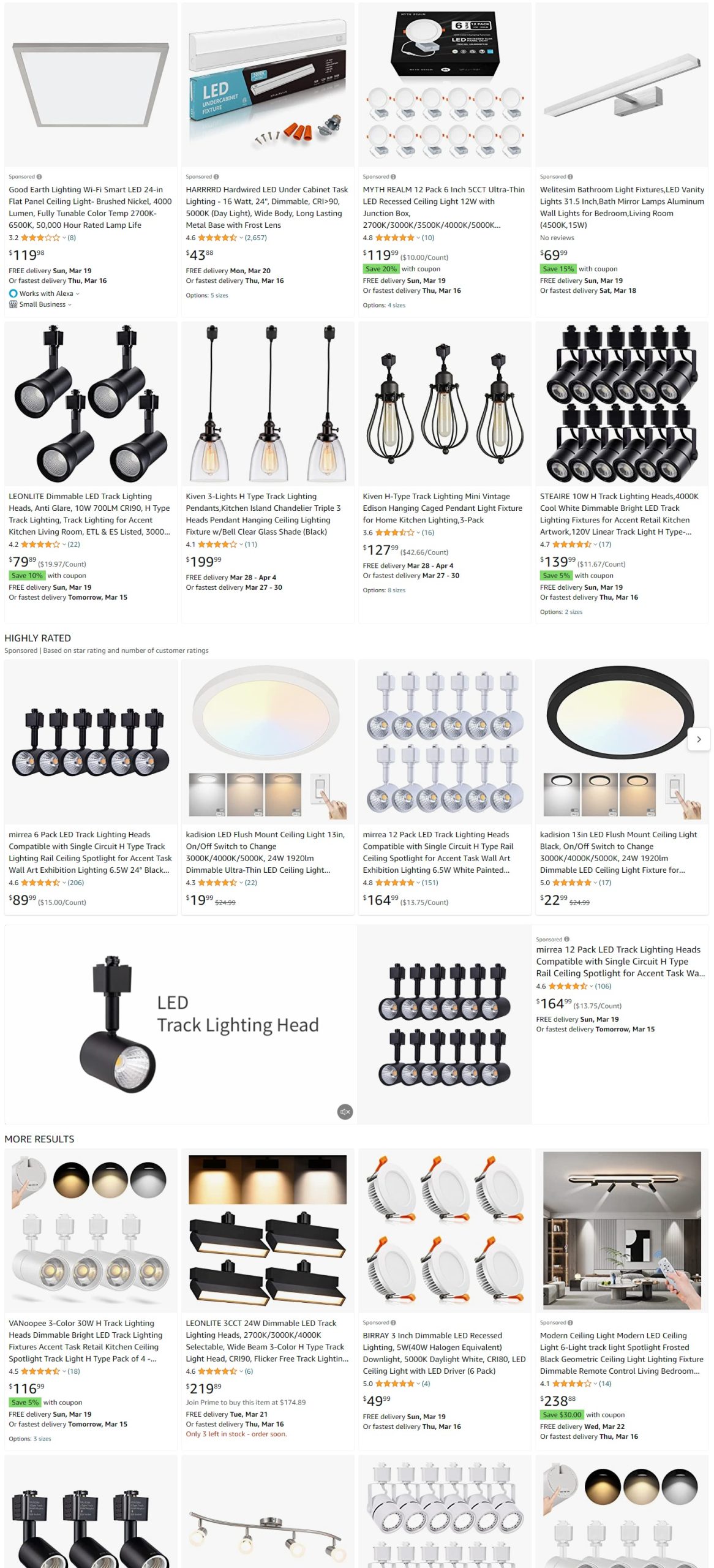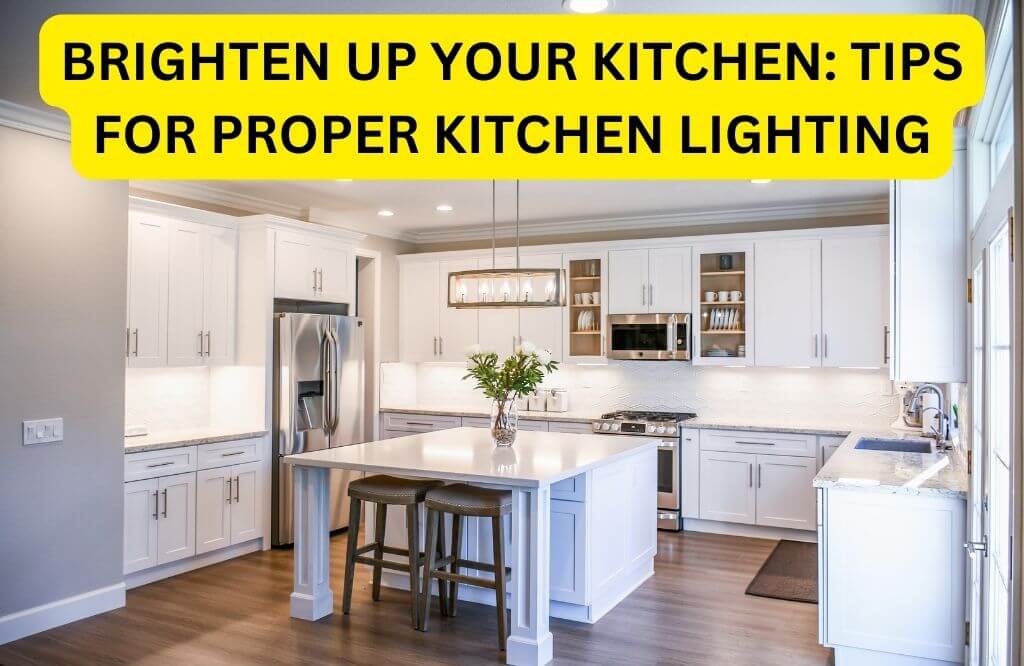A Well-Lit Kitchen Is Key to Great Cooking and Entertaining
The kitchen is often considered the centerpiece of the home, and the right lighting is essential to enhance its atmosphere and functionality. Proper kitchen lighting not only enhances the functionality of the space but also creates a welcoming atmosphere for cooking and entertaining. In this article, we’ll explore how to light a kitchen properly, taking into account the kitchen’s size, layout, color scheme, personal style, and more.
| Key Takeaways |
|---|
| Ambient, task, and accent lighting are the three types of lighting to consider when designing your lighting plan |
| Choose bulbs with the appropriate color temperature and brightness for each type of lighting |
| Make the most of natural light by adding windows or skylights and using reflective surfaces |
| Consider using dimmers, timers, and motion sensors to create a more versatile and energy-efficient lighting system |
| Choose light fixtures that complement the overall style of your kitchen and match your personal taste |
| Proper placement of light fixtures is crucial to ensure that your kitchen is well-lit and functional |
| Maintain and clean your kitchen light fixtures regularly to ensure they are working correctly and safely |
Assess Your Kitchen’s Lighting Needs
Before you begin to light your kitchen, it’s essential to assess your lighting needs. Take note of the natural light sources in your kitchen and where you need additional lighting. Consider the following:
- Do you have enough task lighting for preparing meals?
- Do you need more ambient lighting for socializing and entertaining?
- Are there any areas of the kitchen that are particularly dark?
Types of Kitchen Lighting
There are three types of kitchen lighting to consider when designing your lighting plan: ambient, task, and accent lighting. Layering these different types of lighting creates a balanced and functional space.
Ambient lighting is the primary source of light in your kitchen. It provides overall illumination and sets the tone for the room. This can come from ceiling fixtures or recessed lighting.
Task lighting is essential for specific areas in the kitchen, such as the sink, stove, and countertops. Under-cabinet lighting or pendant lights can provide adequate task lighting.
Accent lighting is used to highlight specific features in the kitchen, such as artwork, a backsplash, or a kitchen island. Track lighting or recessed lighting with adjustable fixtures can be used for accent lighting.

Light Bulb Types
When choosing bulbs for your kitchen lighting, there are a few things to keep in mind. First, consider the color temperature of the bulbs. A warmer color temperature (2700K-3000K) is ideal for creating a cozy and inviting atmosphere, while a cooler color temperature (3500K-5000K) is better for task lighting.
Next, consider the brightness or lumens of the bulbs. For ambient lighting, you’ll want around 300-500 lumens per square foot, while task lighting may require up to 1000 lumens per square foot.
Halogen bulbs are another option that provides bright, white light suitable for task lighting. They also work well with dimmer switches. However, they are less energy-efficient and have a shorter lifespan than LED bulbs. It’s essential to consider the color temperature, energy efficiency, and lifespan of the bulbs when choosing the right ones for your kitchen lighting needs.
Make the Most of Natural Light
Natural light can be a beautiful and energy-efficient way to brighten up your kitchen. If possible, consider adding windows or skylights to let in more natural light. You can also use reflective surfaces, such as mirrors or glossy tiles, to bounce natural light around the room.
Dimmers and Lighting Controls
Adding dimmers to your kitchen lighting can be a game-changer. Dimmers allow you to adjust the brightness of your lights to suit your needs, whether you’re preparing a meal or hosting a dinner party. They can also help save energy and extend the life of your bulbs. Other lighting controls, such as timers and motion sensors, can also help create a more versatile and energy-efficient kitchen lighting system.
Styling and Decor
Lighting can also contribute to the overall style and decor of the kitchen. Consider the style of your light fixtures and how they fit with your kitchen’s design and personal taste. From sleek and modern to traditional and rustic, there are many styles to choose from when it comes to kitchen lighting. You can opt for classic chandeliers, modern pendant lights, or even industrial-style fixtures. The key is to choose lighting that complements the overall style of your kitchen and matches your personal taste.
Lighting placement
Proper placement of light fixtures is crucial to ensure that your kitchen is well-lit and functional. Here are some tips on where to place light fixtures in different areas of the kitchen:
- Over the sink: Install a pendant light or a recessed light above the sink to provide adequate task lighting for washing dishes and food preparation.
- Over the stove: A range hood with built-in lighting can provide ample task lighting for cooking on the stove. Alternatively, you can install a pendant light or recessed lighting.
- Over the island: Pendant lights or a chandelier can provide both task and ambient lighting over a kitchen island. The number of lights you need will depend on the size of the island and the amount of light you need.
- Under the cabinets: Install under-cabinet lighting to provide task lighting for food preparation and cooking. LED strip lights are a popular option and are easy to install.
Maintenance and safety
It’s essential to maintain and clean your kitchen light fixtures regularly to ensure they are working correctly and safely. Here are some tips to keep your kitchen lighting in top condition:
- Clean your light fixtures regularly to remove dust and dirt buildup. Use a soft cloth or a feather duster to avoid scratching the surface.
- Replace burnt-out bulbs as soon as possible to ensure adequate lighting in the kitchen.
- Check wiring connections regularly to ensure they are secure and safe.
- Avoid installing light fixtures near sources of moisture, such as the sink or stove, to prevent damage or short circuits.
Conclusion
When it comes to styling and decor, the right lighting can make all the difference in creating the perfect ambiance. Consider the design of your kitchen and choose fixtures that complement the overall look and feel of the space. For a modern kitchen, sleek and minimalistic fixtures such as recessed lighting or linear pendants can work well. If your kitchen has a traditional or rustic feel, consider pendant lights with a vintage or industrial look.
It’s also essential to think about the materials and finishes of your light fixtures, which can contribute to the overall style and decor of your kitchen. Brass or copper finishes can add warmth and richness to a kitchen, while matte black or chrome fixtures can create a more modern and edgy look.
In addition to style, it’s important to consider the maintenance and safety of your kitchen lighting. Make sure all fixtures are installed correctly and safely and check them regularly for any signs of wear or damage. Clean light fixtures regularly to prevent dust buildup and ensure optimal performance.
Finally, it’s worth noting that kitchen lighting is not just about aesthetics and functionality, but also energy efficiency. Consider using LED bulbs, which are energy-efficient and have a longer lifespan than traditional incandescent bulbs. You can also install dimmer switches, timers, and motion sensors to control the brightness of your lights and save on energy costs.
In conclusion, a well-lit kitchen is essential for creating a functional, inviting, and stylish space. By considering the key design considerations, types of kitchen lighting, light bulb types, lighting placement, dimmers and lighting controls, maintenance and safety, and styling and decor, you can create a kitchen lighting plan that perfectly suits your needs and personal style. So why wait? Brighten up your kitchen today and start enjoying all the benefits of a well-lit space!

